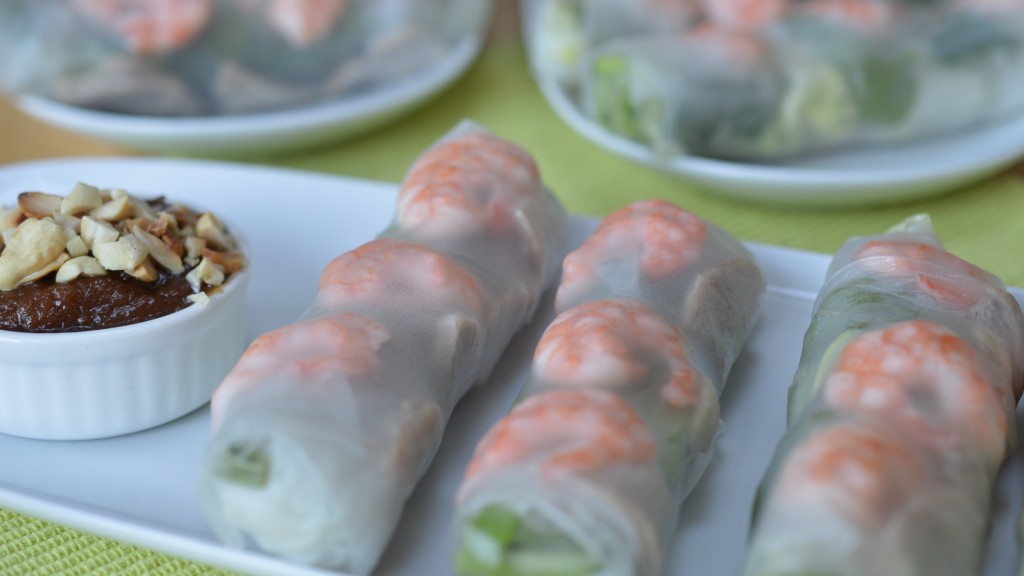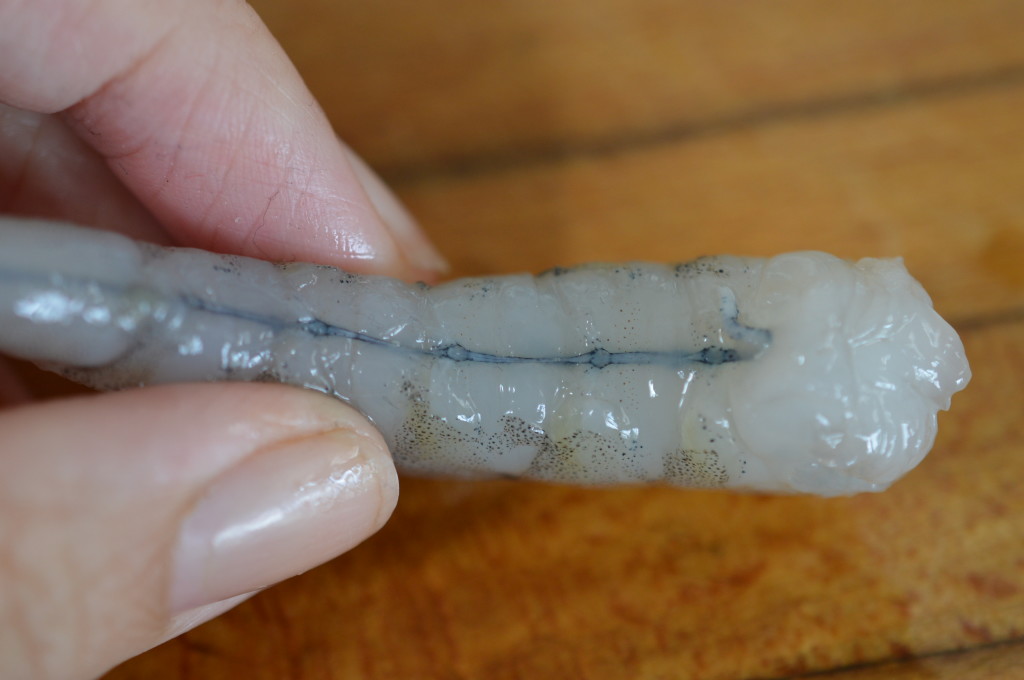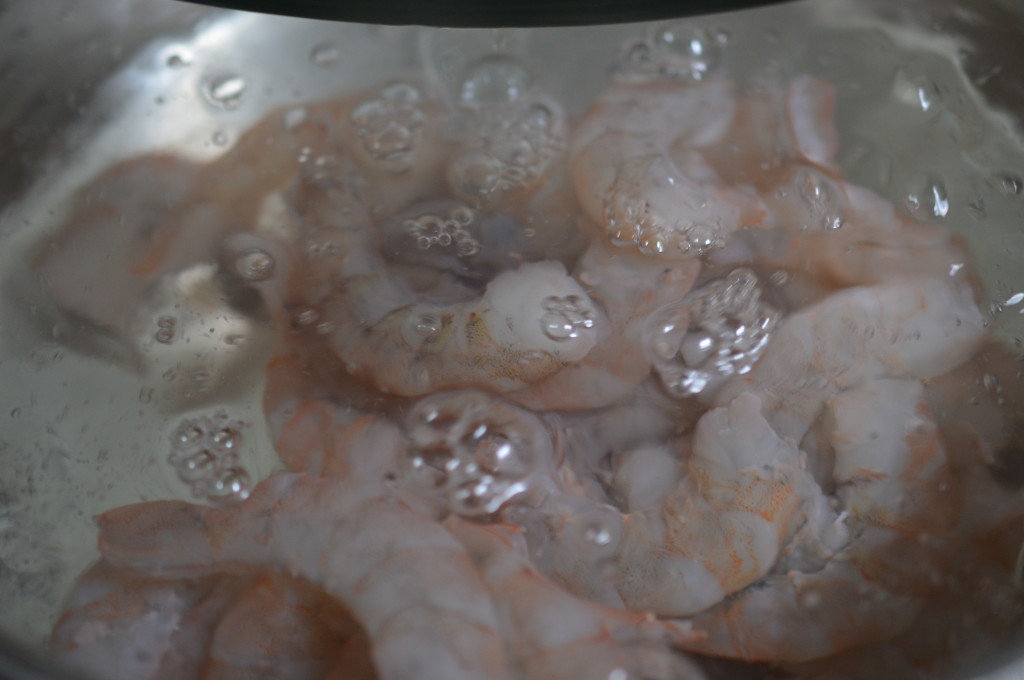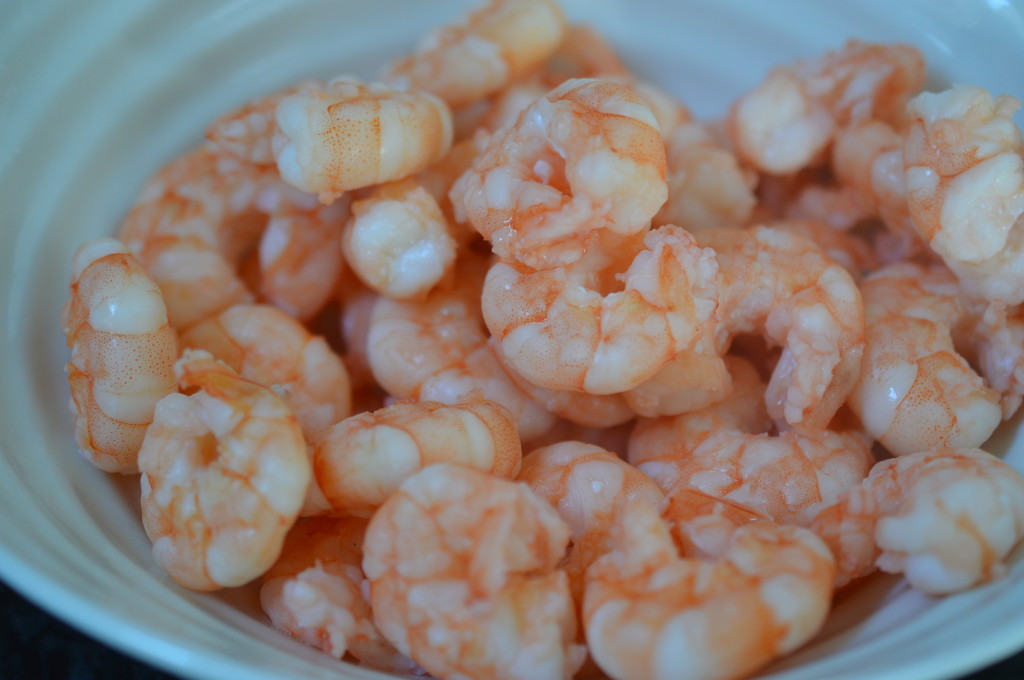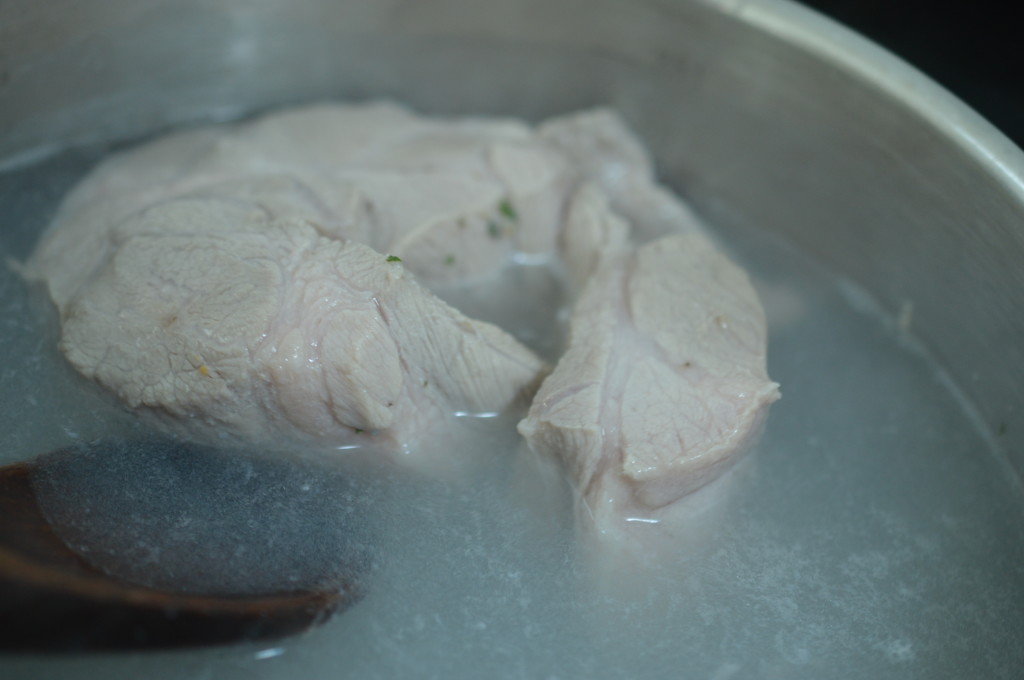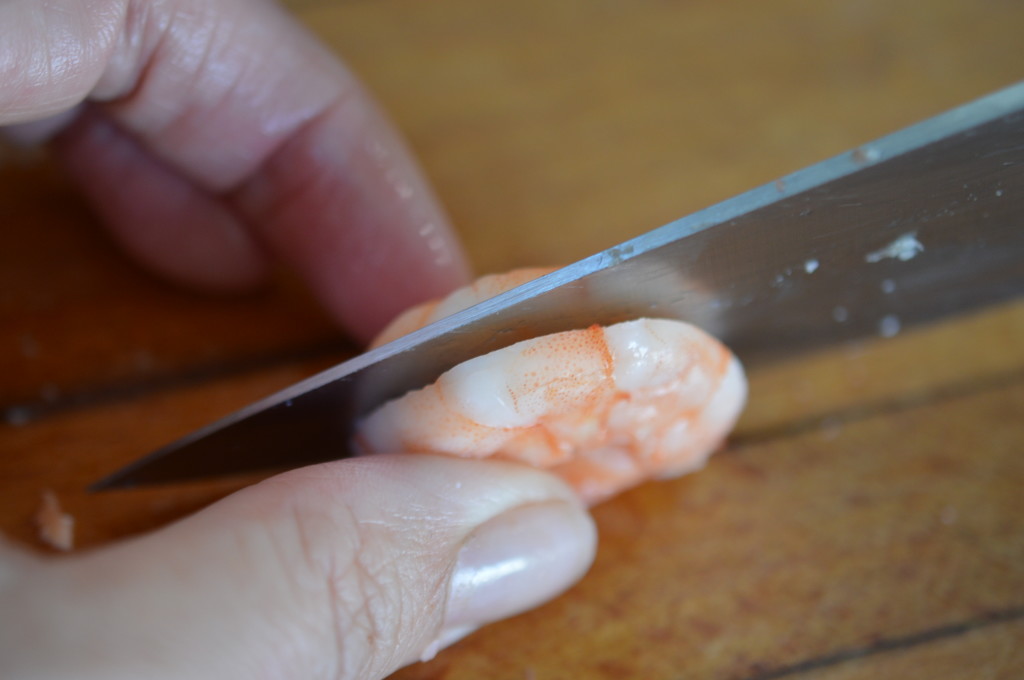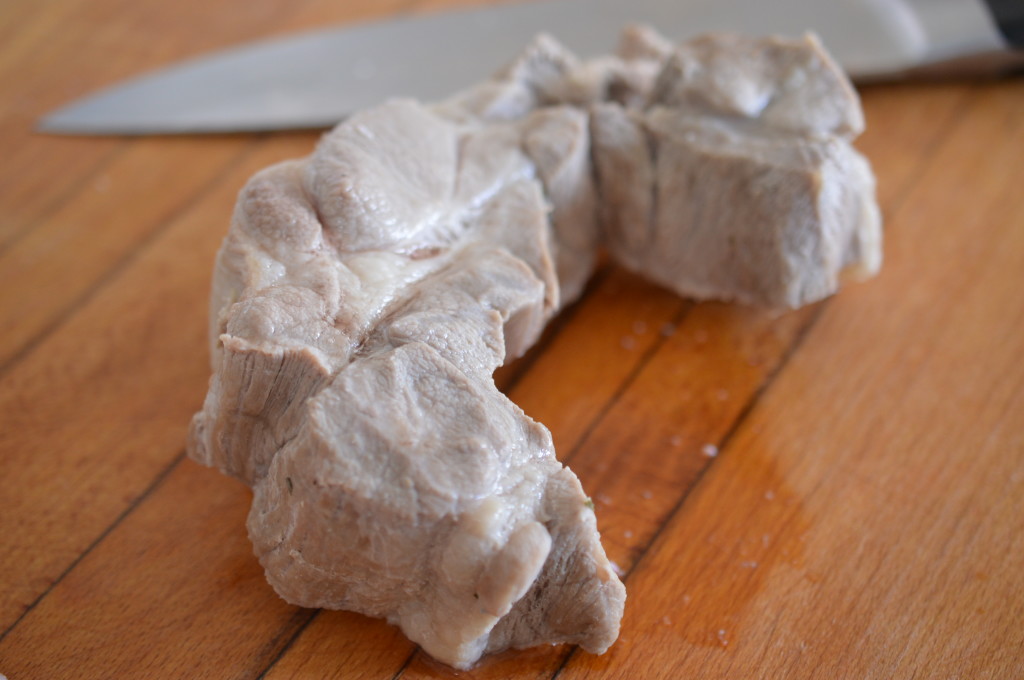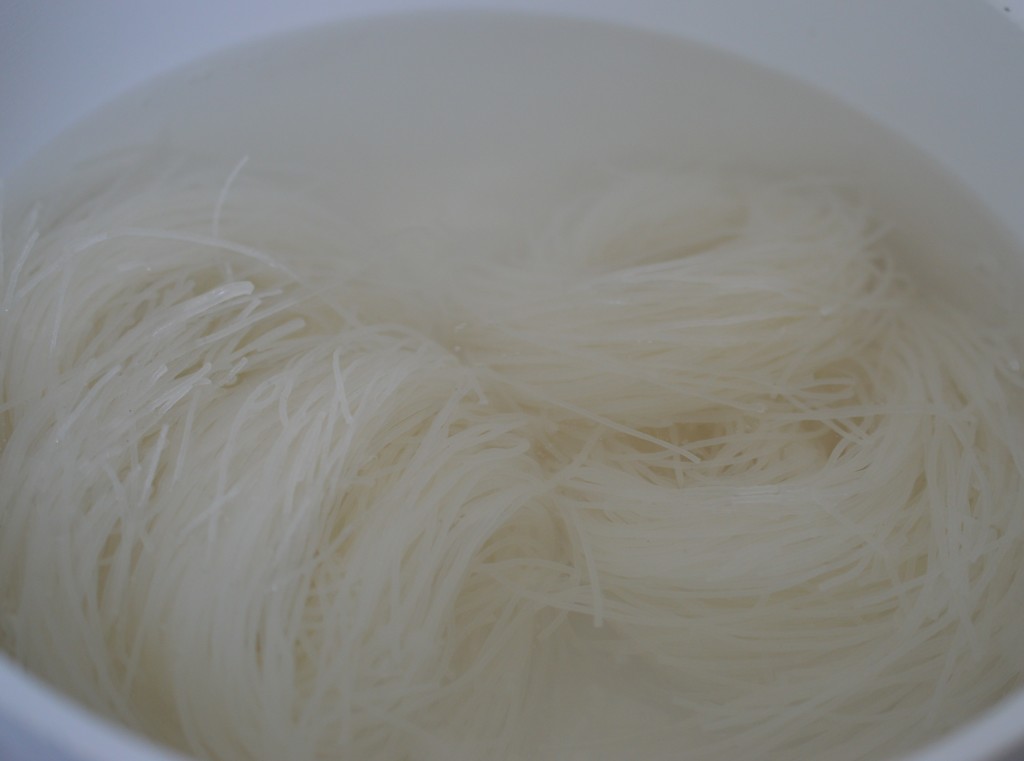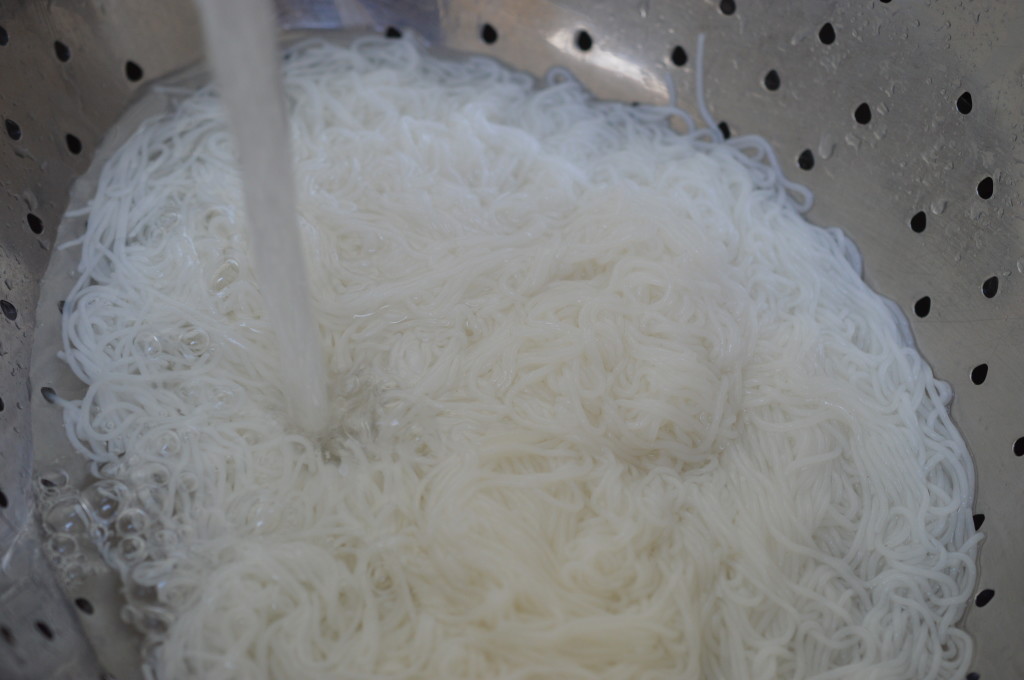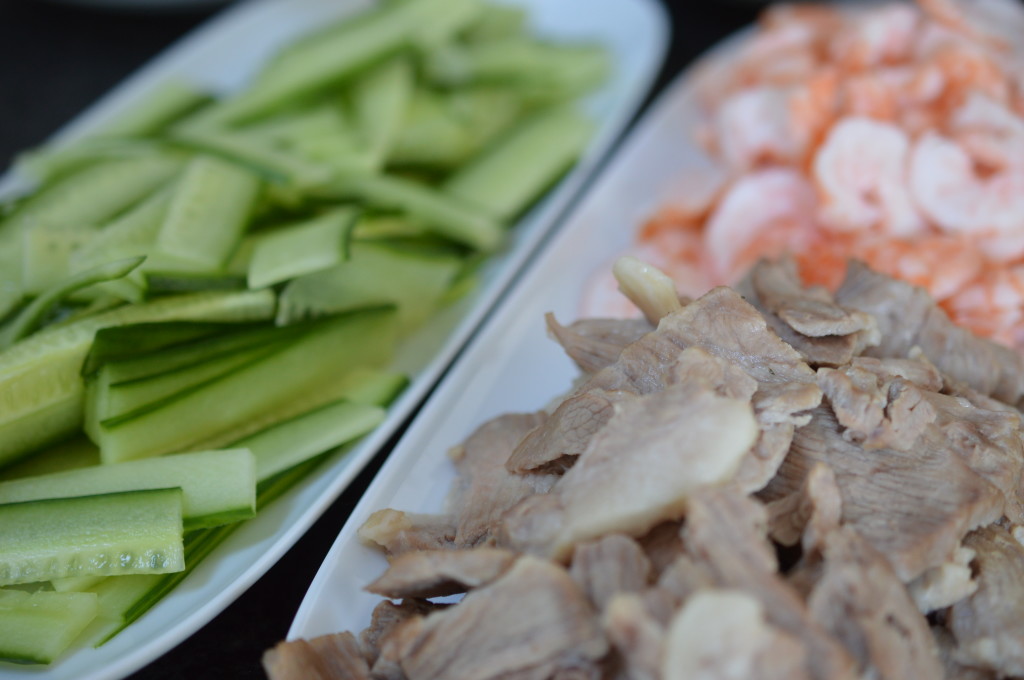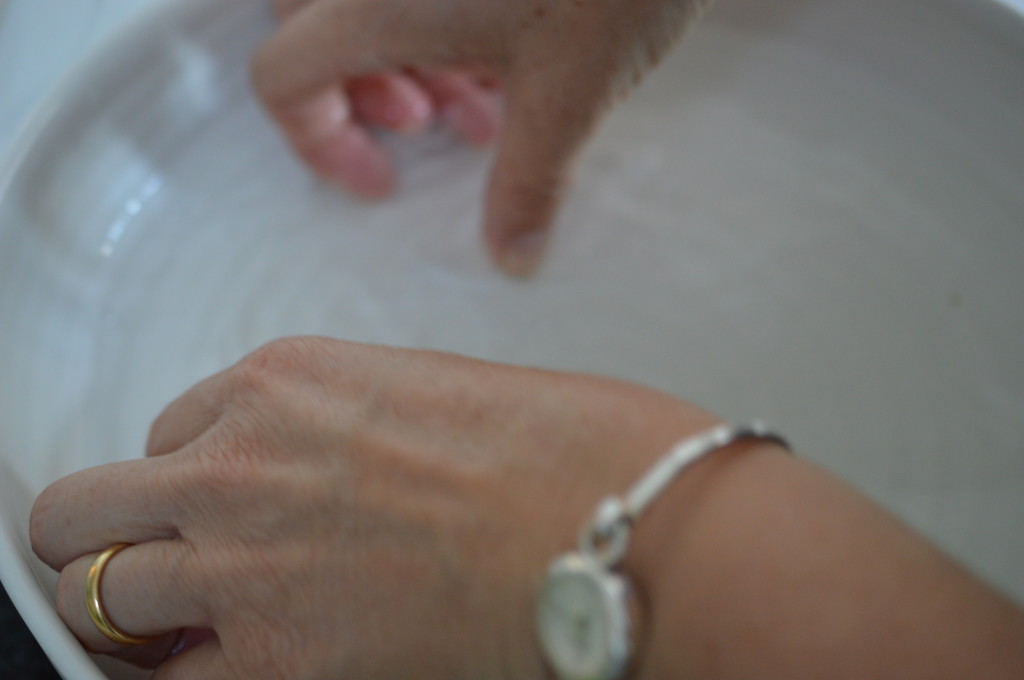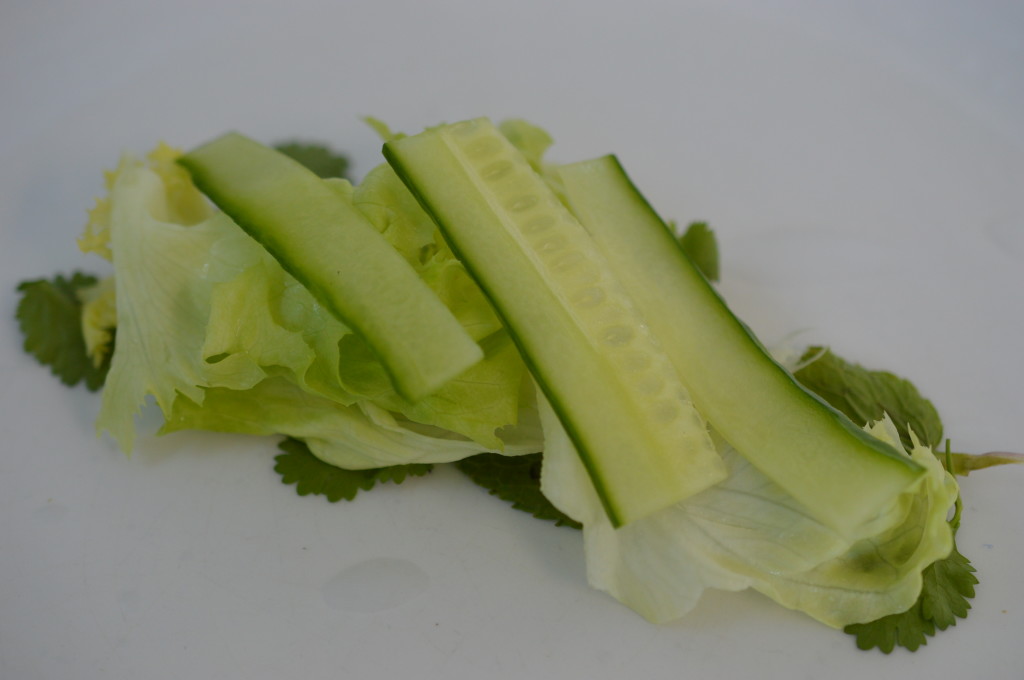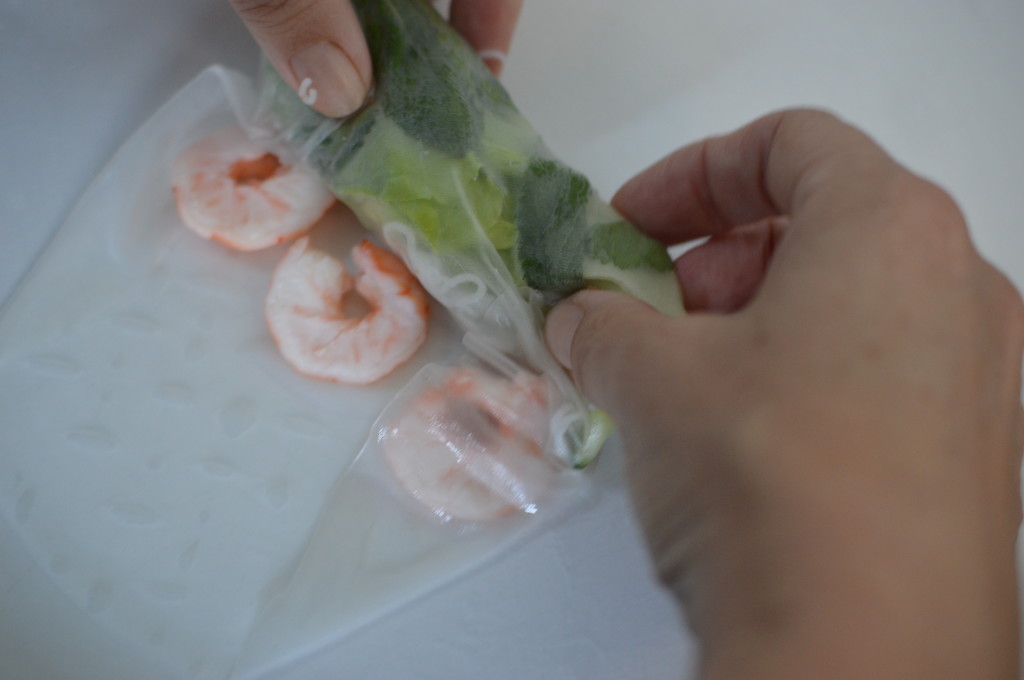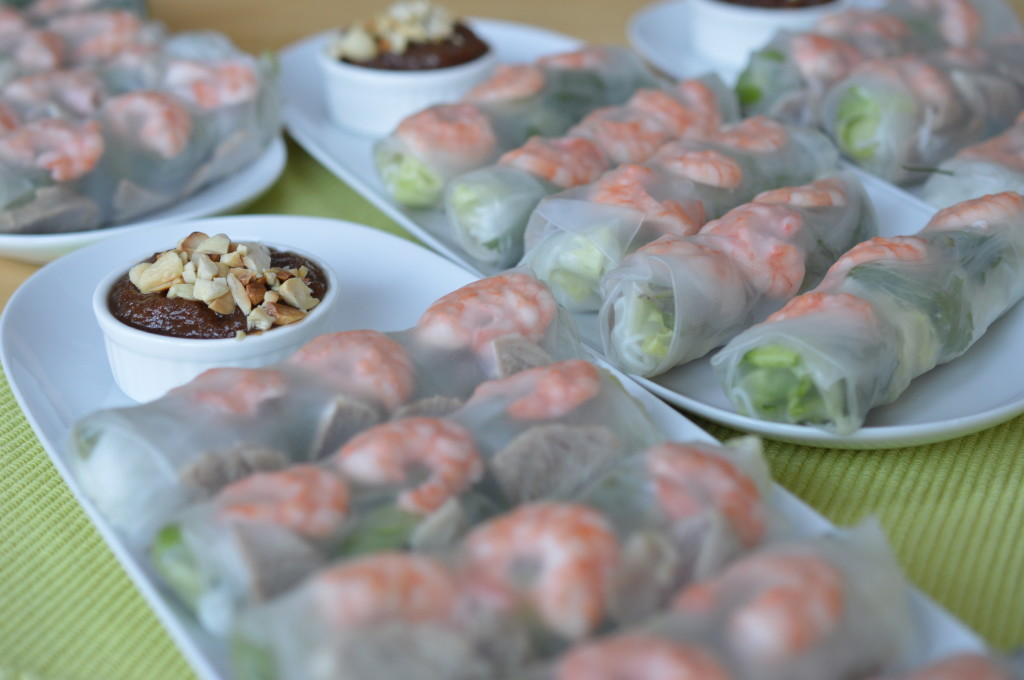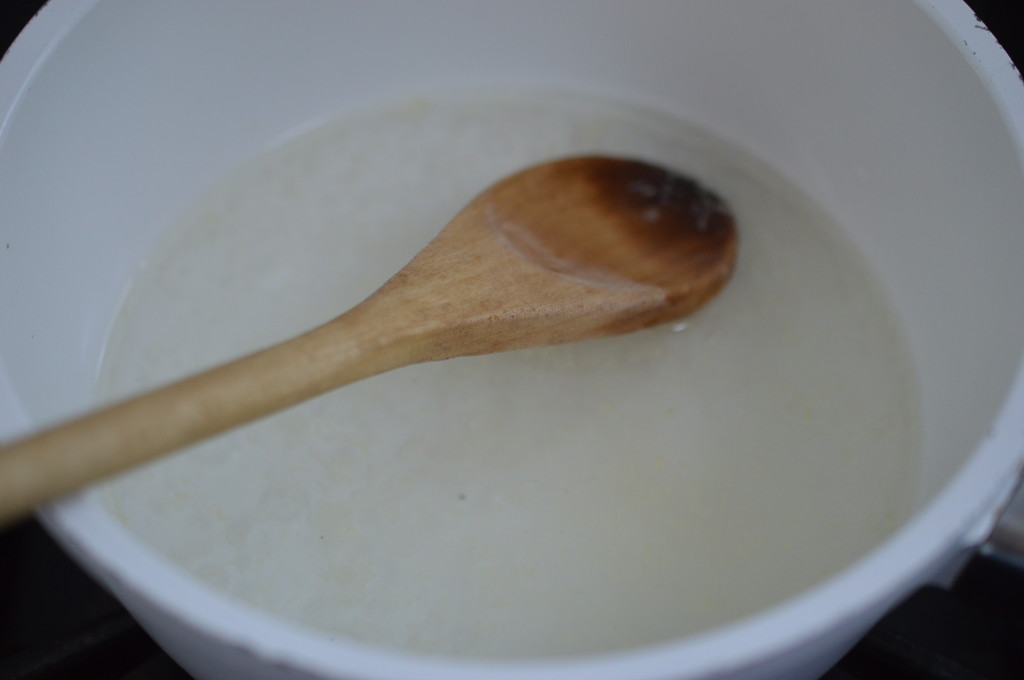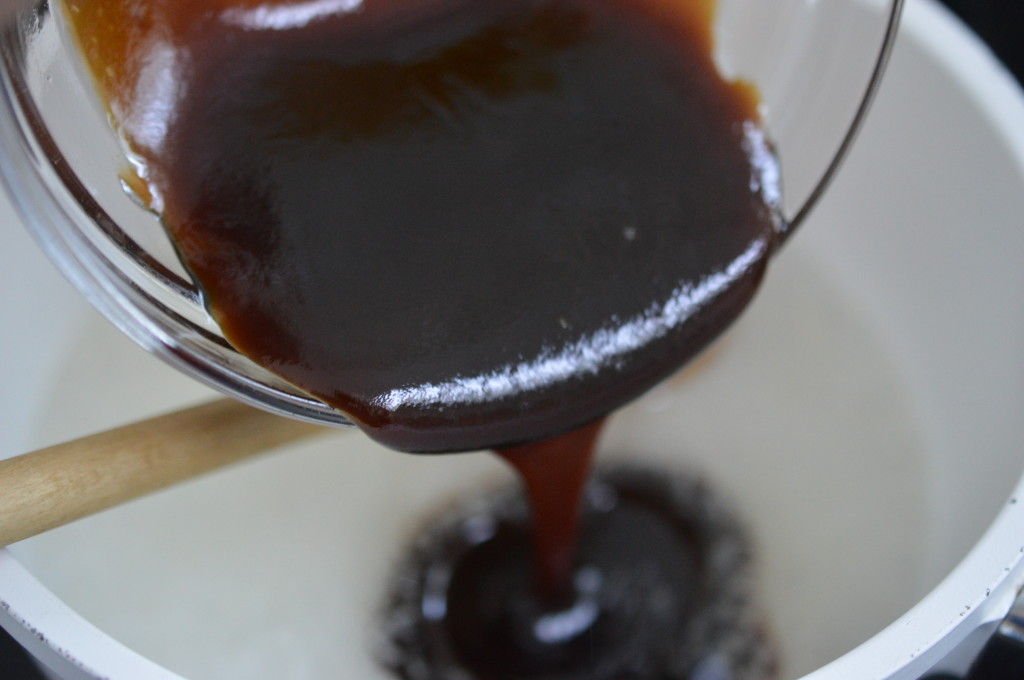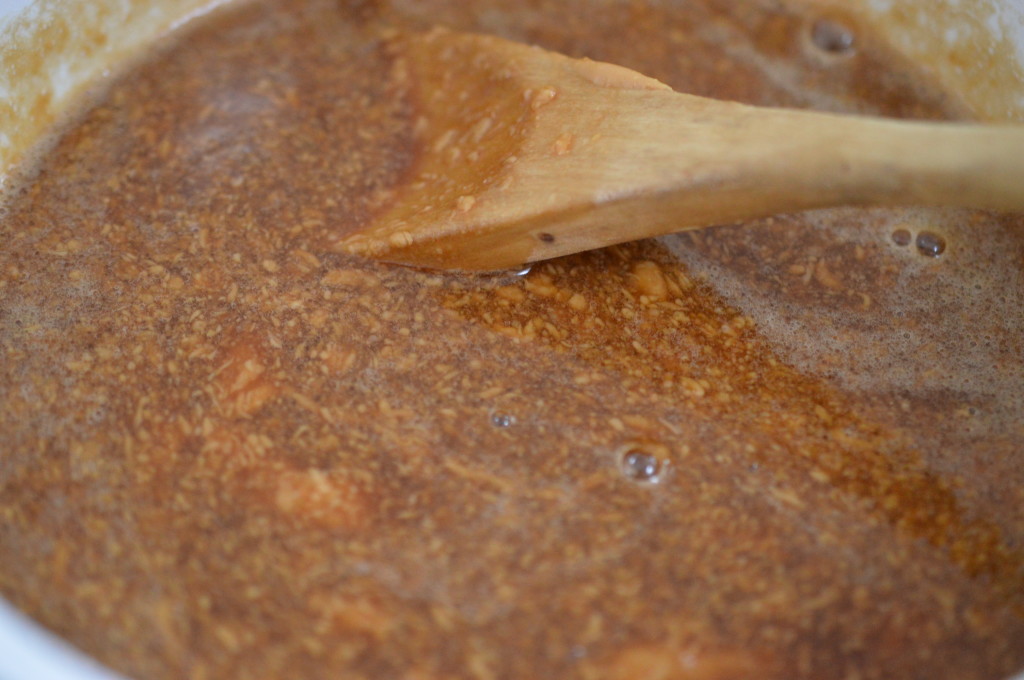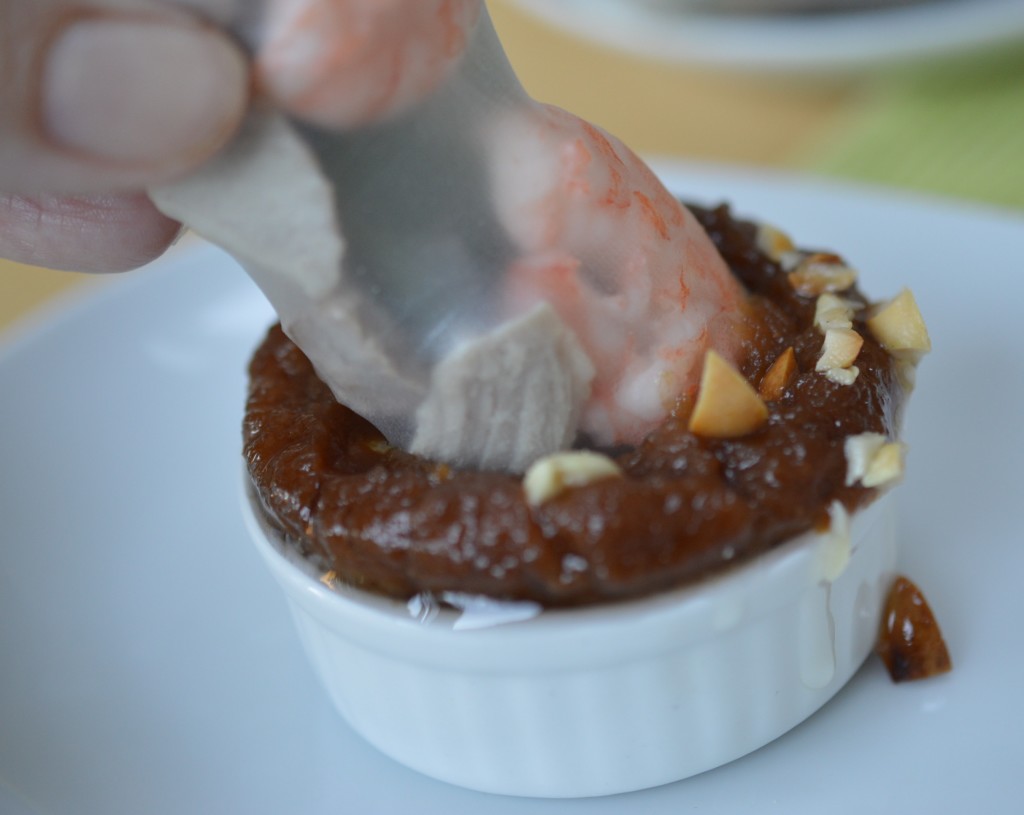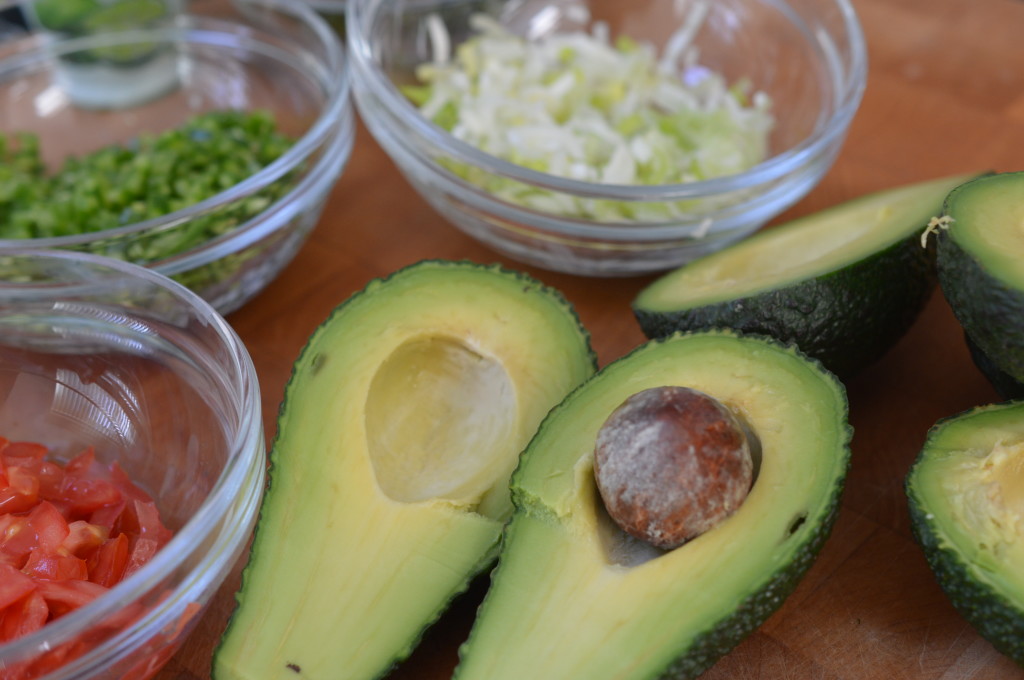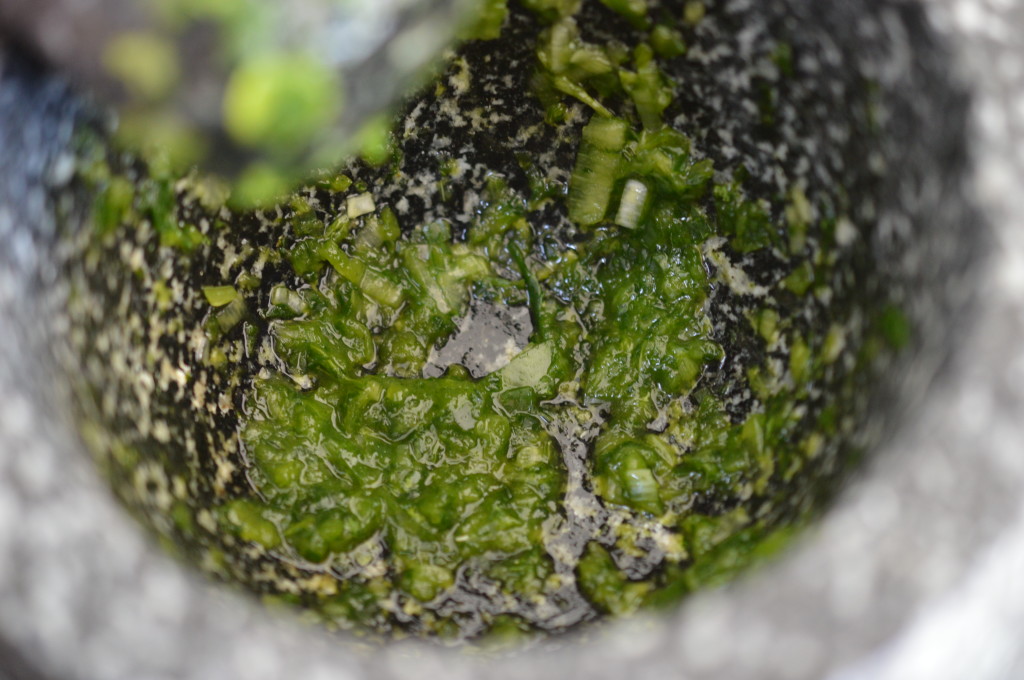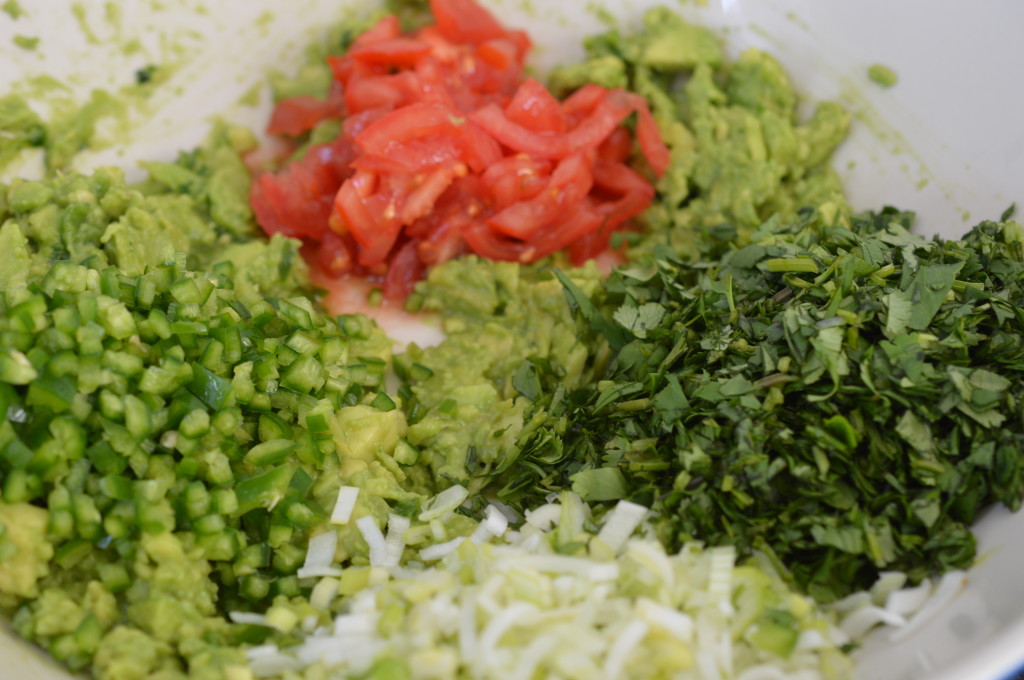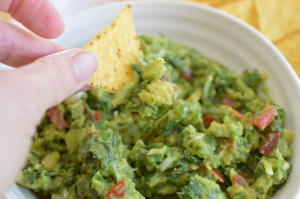Vietnamese Style Fresh Spring Rolls with Peanut Dipping Sauce
Fresh Vietnamese style spring rolls scream summer-time to me and the late May Bank Holiday weekend feels like the start of summer. This year is somewhat blighted by exams, but that’s all the more reason to take pleasure in food.
They’re fiddly to make, so they’re the kind of thing to make when you feel like pottering in the kitchen. Don’t make it a chore. I put a bottle of dry white wine in the fridge and turned on my latest audible.co.uk purchase.
Without the peanut based dipping sauce they’re not even a guilty pleasure and two of my brood, quite genuinely, prefer them that way.
Ethical prawns are fairly difficult to get hold of. Personally, I avoid tropical prawns, both farmed and wild. I watched a TV documentary and that was that.
Atlantic prawns are expensive and, for some reason, I can only find them peeled. You’d think that if you buy ready peeled raw prawns they’d also be de-veined, but they’re not.
It’s easy to do. Cut along the back line and lift it out with the point of your knife. Bit gruesome but what you’re removing is the dirt sack. If you cook it with it still in place it will taste ‘gritty’.
I’m using a little over 300g.
If I had them in their shells, I’d dry fry them. Like this, I poach them. You need about 3 litres/5 pints of fresh water. Bring to the boil and add 2 teaspoons of salt. Reduce the heat to medium.
Simmer for about 2-3 minutes. They start turning pink almost immediately – and they take far less time to cook than you would ever imagine. Don’t over do. Over-cooked prawns taste rubbery.
When they’re pink, remove from the water with a slotted spoon. Don’t drain the water away because you’re going to use it for the pork.
The same weight of pork shoulder. You don’t have to be exact. This is a fairly fatty cut, but everything else is so utterly lean …
It’ll take about 20-25 minutes. A longer and thinner piece will take less time than a shorter fatter bit. You need to cook to an internal temperature of 62ºC/145ºF.
Whilst the pork is cooking, slice the prawns in half. Firstly, it makes an expensive ingredient go further. Secondly, I prefer it. Cut lengthwise and the end result will be much prettier.
My poached pork looks anaemic. Trust me. A really sharp knife and the patience of a saint is what is needed here.
As soon as it’s cool enough, slice thinly.
Rice vermicelli noodles are embarrassingly easy to prepare. Put them in a bowl and pour boiling water over them. Add 1tsp of salt and, contrary to the packet instructions, leave them for 4 minutes. You are looking for ‘al dente’. That’s cooked through but with enough resistance to feel you’re biting something.
Rinse in cold water – and drain thoroughly.
Thinly slice cucumber. There’s no need to peel or de-seed, but you want them about finger-length. Soft lettuce, washed and torn into useable sized pieces. Mint sprigs, leaves picked. Coriander, leaves picked.
You’ve got other tasty options. Grated carrot, thai basil, peanuts .. Get it all laid out in a production line kind of thing. It makes everything so much easier.
I like this bit. Disregard the packet instructions. I get out a big flat white plate and fill my Sophie Conran Roasting Dish (you want something shallow and large enough to lay a rice paper wrapper flat) with warm tap water. Zero fuss.
I find the rice paper wrappers crack if they are left exposed to air. So have a clean tea-towel to one side and flick them over your unused pile while you are working on the first one.
Dunk the wrapper in the water. It’ll immediately start to soften. It’s quick. Pull it out before it’s ready to roll because they carry on softening out of the water. By the time you’ve got it laid out on your plate it’ll be perfectly rollable.
Now, it’s the pretty stuff. Arrange a few mint leaves on the top third of the wrapper, leaving an inch either size. A few coriander leaves.
Some soft lettuce.
The thinly sliced cucumber.
A straggle of vermicelli noodles. And then the pork and prawns. Rather than pile everything up burrito style, it’s far simpler to roll if you tuck the pork slices up against the pile of ‘salad’ and the halved prawns in front of that. With the prawns, keep the cut side uppermost. That’ll mean your end result will look pretty!
The first roll needs to be tight. Tuck all that lovely crunch firmly inside the rice paper.
Then the sides. Fold the sides over to stop everything falling out. The rice paper wrappers are ‘sticky’ so this is far easier than I’m making it sound. Then roll to the end.
Et voilà!
My top tip – don’t stack these. They’re still sticky. If you want to store these for any length of time – lay them in a single layer, cover with some large lettuce leaves, cling-wrap and pop into the fridge.
Now the dipping sauce. Have everything ready – that’s sunflower oil, microplaned garlic, water, sugar, hoisin sauce and smooth peanut butter. This is super-quick.
Over a medium heat, cook the microplaned garlic in 4 tablespoons of sunflower oil. You want to cook out the raw-ness, but make sure it doesn’t catch. Add the water and sugar.
Then it’s the Hoisin Sauce.
And the smooth peanut butter.
Give everything a stir.
Miraculously, it becomes smooth.
And, that’s it. Pour into your dipping bowls. A few lightly chopped roasted peanuts sprinkled on the top is a good indicator there are peanuts involved. If I’m serving these at a platter, I cut my spring rolls in three. No double-dipping in my kitchen!
Eat.
 Vietnamese Style Fresh Spring Rolls
Vietnamese Style Fresh Spring Rolls
Makes 20
For the Spring Rolls:
- 300g pork shoulder
- 300g large raw, peeled prawns
- Salt
- 3 litres/5 pints water
- One block of rice vermicelli noodles
- Fresh mint, leaves picked
- Fresh coriander, leaves picked
- ½ cucumber, cut into finger-length pieces and thinly sliced
- 1 soft lettuce
- 20 rice paper wrappers
For the Peanut Dipping Sauce:
- 4 tablespoons of sunflower oil
- 2 cloves of garlic, microplaned or finely chopped
- 100 fl oz water
- 2 tablespoons caster sugar
- 8 tablespoons of Hoisin Sauce
- 6 tablespoons of smooth peanut butter
- Roasted peanuts, roughly chopped
Bring 3 litres/5 pints of water to a boil. Meanwhile, de-vein the prawns.
When the water is boiling, add 2 teaspoons of salt. Turn the heat down to medium and add the raw prawns. Simmer for about 3 minutes. They are cooked through when they have turned pink. Remove with a slotted spoon and leave to cool.
Now poach the pork. Turn the heat up again and bring the water back to a boil. Add the pork shoulder. It will take about 20 minutes, but there’s some variation depending on whether you are using a long, thin piece or a shorter, fatter one. You need to cook to an internal temperature of 62ºC/145ºF.
While the pork is cooling, slice the prawns in half lengthways.
Place a block of vermicelli rice noodles in a bowl and cover with boiling water. Add 1 tsp salt and leave to soften for 4-5 minutes.
Slice the pork as thinly as you can.
Rinse the vermicelli rice noodles in cold water and drain thoroughly.
Now, set everything out in a production line – the pork, prawns, noodles, coriander leaves, mint leaves and cucumber. Fill a shallow bowl with warm water and open the packet of rice paper wrappers. Cover the remainder with a clean towel and dip the first one in the water. It’ll soften beneath your fingers. Ignoring the packet instructions, remove before it feels entirely roll-able. It will continue to soften. You want pliable but not limp.
Lay flat. Arrange the herbs, lettuce, cucumber and noodles on the top third of the wrapper. Tuck the pork slices up against the salad. Then the prawn halves in a third row. Make sure the cut side is facing upwards.
Tightly roll the wrapper over the salad. Tuck the sides in and continue rolling. Place the finished Spring Roll on a plate with the seam facing downwards. If you need to store – lay in a single layer, cover with large salad leaves and cling-wrap. Overnight in the fridge is fine.
For the dipping sauce – place 4 tablespoons of sunflower oil in a saucepan and soften the microplaned garlic. Then add the water and sugar. When the sugar has dissolved, add the Hoisin Sauce. Then the smooth peanut butter. Stir everything together over a low heat until it is smooth and shiny.
Pour into a serving dish and top with roughly chopped roasted peanuts.
Eat.
